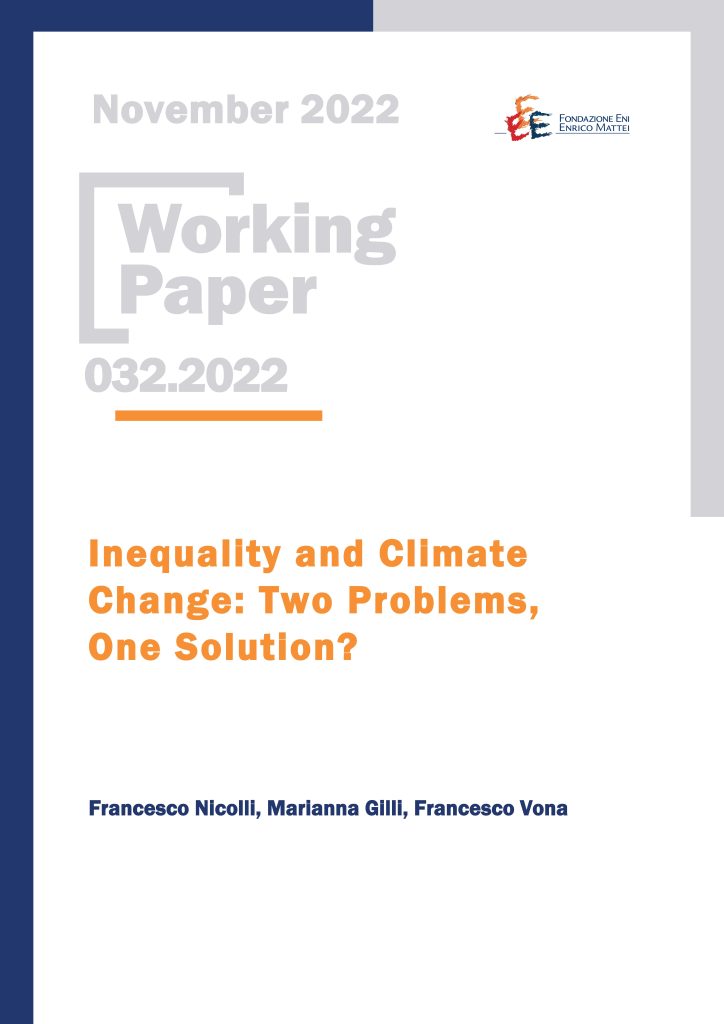Inequality and Climate Change: Two Problems, One Solution?

17.11.2022
Francesco Nicolli (Department of Economics and Management, University of Ferrara); Marianna Gilli (Department of Economics and Management, University of Ferrara); Francesco Vona (University of Milan, Fondazione Eni Enrico Mattei and OFCE, Sciences Po)
Q53, Q56, O15
Inequality, Climate Change, GHG Emissions, Environmental Kuznets Curve, Sustainable Development Goals, Political Economy
This paper re-examines the relationship between per capita income, inequality, and per capita emissions while accounting for nonhomotheticity in green preferences and nonlinearities in the impact of economic growth on GHG emissions. Theoretically, our research is motivated by the fact that if environmental quality is a need with low priority on the hierarchical scale, the effect of inequality on emissions should vary depending on the level of income per capita. Specifically, for a given level of income per capita, a richer median voter will be more likely to approve of more stringent environmental policies, and thus, lower inequality is beneficial for the environment. With nonhomothetic preferences, the beneficial environmental effect of reducing inequality emerges only for countries that are sufficiently rich. We test this hypothesis by augmenting a standard EKC equation with the interaction between income per capita and the Gini coefficient. Our results for CO2, SO2 and N2O emissions corroborate our main hypothesis: reducing inequality is beneficial for the environment only for rich countries.
***
Suggested citation: F. Nicolli, M. Gilli, F. Vona, ‘Inequality and Climate Change: Two Problems, One Solution?’, Nota di Lavoro 32.2022, Milano, Italy: Fondazione Eni Enrico Mattei
